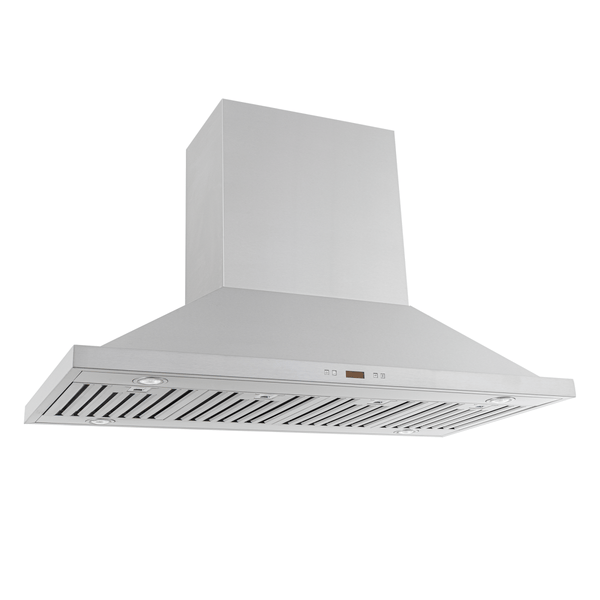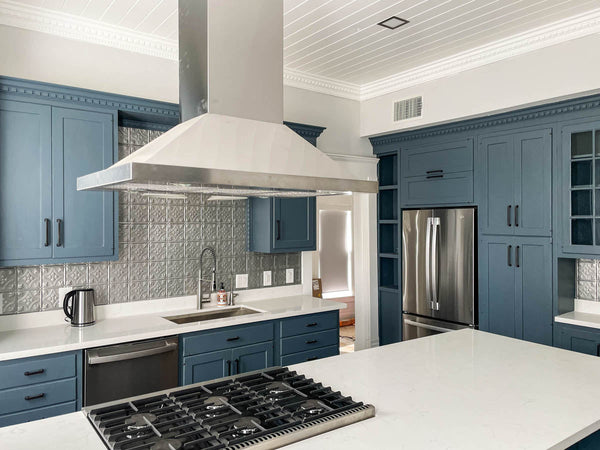To properly clean and sanitize your kitchen, follow these steps:
- Clear off your floors, countertops, and appliances. Don’t leave any food out!
- Put your dish rags into your laundry and throw away any old grimy sponges.
- Take out your Clorox wipes or other disinfectant cleaner and prepare to disinfect…
- ...or make a DIY cleaner using:
- vinegar and water (1:1 ratio)
- rubbing alcohol and water (3 to 4 parts rubbing alcohol to one part water)
- bleach and water (5 tbsp of bleach per gallon of water)
- ...or make your own DIY cleaner using bleach and water, vinegar and water, or rubbing alcohol and water.
- Empty the cleaner into a spray bottle.
- Spray every surface.
- Let the cleaners soak for 2-4 minutes.
- Wipe the surfaces clean with a dish towel.
The kitchen is one of the most high-traffic areas of your home, so it’s vital to keep it clean and fresh.
The National Sanitation Foundation (NSF) conducted a study which showed that the kitchen, and not the bathroom, is the germiest area of the home.
They found harmful coliform bacteria like E. Coli and salmonella on:
- 75%+ - Dish rags and sponges
- 45% - Sinks
- 32% - Counters
- 18% - Cutting Boards
They also conducted a study on the germiest items in the kitchen – the most common contaminated surfaces include the refrigerator vegetable door, meat drawer, and can openers.
Are you eager to start cleaning? If so, here’s a detailed step-by-step guide just for you.
Related: How To Disinfect Your Home Naturally (Room By Room)
Note: You can find Clorox wipes on Amazon here.
How do you sanitize a kitchen?
Sanitizing your kitchen involves two processes: 1) disinfecting counters, cabinets, stovetops, and other surfaces and 2) disinfecting appliances, dishware, cooking utensils, and other objects.
Before cleaning your kitchen, the first step is to clear everything off all surfaces. This way, you can clean the kitchen in its entirety.
When choosing your disinfectant, avoid abrasive cleaners with bleach or other harsh chemicals.
As you clean the surfaces, spray everything first and wipe it after a few minutes. This gives the chemicals in your disinfectant more time to kill germs on the surface.
Keep reading for a more detailed breakdown of how to sanitize specific areas of your kitchen.
How do you clean and sanitize kitchen cabinets?
To clean and sanitize kitchen cabinets, dish soap and water is your safest bet. Fill a medium-sized bowl with lukewarm water and a few squirts of soap.
One of the biggest fears with wooden cabinets is that the cleaner will damage the finish. For this reason, avoid bleach and rubbing alcohol.
Instead, all-natural cleaners work effectively.
What is the best way to sanitize countertops?

Rubbing alcohol and water is an effective solution to sanitize your countertops.
The CDC recommends no less than a 50/50 ratio – a 60 to 90 percent diluted solution is ideal.
Note: Rubbing alcohol is already diluted when you buy it in stores, so be sure to check the labels. Most rubbing alcohols will meet the 60-90% criteria.
Diluted bleach and water work well, too.
Depending on the strength you want, the CDC recommends mixing ¼ to ⅓ cup of bleach per gallon of water for your disinfectant.
Never use bleach at full strength for sanitization; it is highly corrosive!
How to Get Rid of Bacteria and Germs in the Air
The best way to get rid of bacteria and germs in the air is to disinfect every surface in your home.
The University of Illinois found that heat can help kill germs. So, you can use hot water for your disinfectant to help accelerate the germ-killing process.
Be cautious with hot water, though, especially if you are sanitizing a finished surface, such as wooden cabinets.
If you prefer to use a household disinfectant, Lysol is incredibly popular and effective.
Also, you can wash your dishes with warm water and soap. Vinegar works wonders too!
How to Sanitize Dishes with Vinegar
Vinegar is an effective all-purpose disinfectant. You can use it on your appliances, floors, countertops, sink, and dishware.
Keep in mind that a group of epidemiologists found that vinegar was slightly less effective than Lysol or Clorox products at sanitizing surfaces and eliminating harmful bacteria.
To sanitize your dishes with vinegar:
- Remove large chunks of grease and food from your dishes.
- Wash them with soap and water or load your dishwasher.
- Mix a solution with 50% vinegar and 50% water
- Put the solution into a spray bottle and spray the dish.
If the vinegar smell is strong, you can rinse the dish with warm water to alleviate it.
After you rinse the dishes, let them air-dry.
How to Completely Sterilize a Room
To completely sterilize your room, you can follow the same process above to disinfect a kitchen.
Here’s what you need to clean:
Walls
Your walls will take you the most time to disinfect. It’s probably the area of your home that you clean the least often. Over time, airborne grease and dirt will build up on the walls, and every time someone touches the wall, germs begin to accumulate.
Floors
The floors are one of the easier parts of your home to clean. To clean your floor:
- Sweep to catch any large bits of food or dirt. You may want to sweep twice – once to get the large debris and a second time to gather the rest of the dust.
- Mop the floor. The cleaning solution in your mop should be enough.
Before you clean your wood floor, keep this in mind: a common general-purpose cleaner like Pledge will not kill bacteria.
For tile floors, the solution in your mop will work great, but you also can’t go wrong scrubbing them with dish soap and water for an extra thorough clean.
To kill bacteria on wood floors, you can use a heavily diluted vinegar solution – one cup of vinegar per gallon of water – or an all-natural cleaner.
Ceiling
The ceiling will be time-consuming to clean, but because it doesn’t get touched and stained often, it should be the least of your worries. Feel free to use any solution that we’ve discussed in this article to sanitize your ceiling.
You’ll probably need a step stool or handheld ladder to reach your ceiling – or you can purchase an extendable pole to clean your ceiling from afar. This pole is also great for dusting in hard-to-reach areas.
Anything You or Others Use Often in the Room
Anything you touch several times a day will have the most germs on it: keyboards, laptops, lamps, and desks, for example.
Take these items out of the room before sanitizing everything else.
A couple more tips:
Thanks for reading our guide on how to keep your kitchen clean and bacteria-free. We’ll leave you with these two final tips.
Wash your hands when entering and leaving rooms.
As you may already know, most people simply don’t wash their hands often enough. Make it a habit to wash your hands every time you enter and leave a room, before you sit down for food, and after you eat too.
Take your shoes off before you enter your home.
You can keep your floors clean and reduce the germs they gather if you take your shoes off before entering your home.
After a long day, who knows what you’ve stepped on?
Consider buying a welcome mat or maybe a fun ‘Please take your shoes off’ sign to encourage people to be sanitary.
That’s it for now. If you’re on a cleaning spree, don’t miss our How to Clean articles.
Related Articles
How to Clean a Microwave Filter
How to Clean Heating Coils on Your Electric Stove
Clean Your Greasy Stove Top Grates in Just 6 Steps
How do you sanitize a kitchen?
Before cleaning your kitchen, the first step is to clear everything off all surfaces. This way, you can clean the kitchen in its entirety.
When choosing your disinfectant, avoid abrasive cleaners with bleach or other harsh chemicals.
As you clean the surfaces, spray everything first and wipe it after a few minutes. This gives the chemicals in your disinfectant more time to kill germs on the surface.
How do you clean and sanitize kitchen cabinets?
One of the biggest fears with wooden cabinets is that the cleaner will damage the finish. For this reason, avoid bleach and rubbing alcohol.
Instead, all-natural cleaners work effectively.
What is the best way to sanitize countertops?
The CDC recommends no less than a 50/50 ratio – a 60 to 90 percent diluted solution is ideal.











